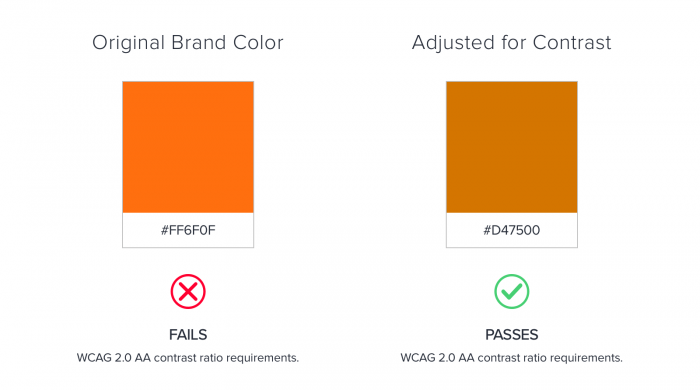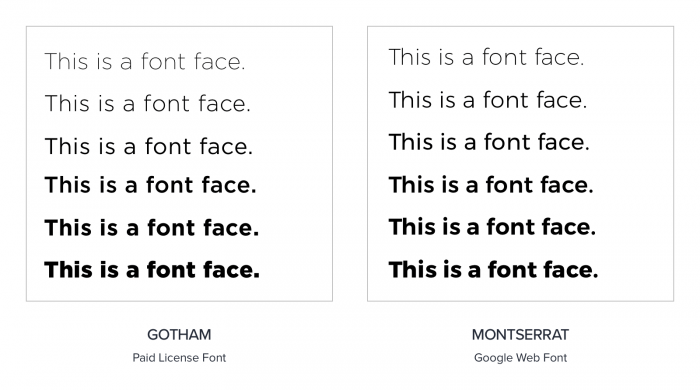Industry Insights
6 Things to Consider When Designing for a Rebrand
Does your brand feel stale or outdated? Are you struggling to make a name for yourself in new or existing markets? If your company is facing any of these challenges, a rebrand may be in your not-too-distant future. Here’s a list of reasons a company might choose to rebrand: Revitalize user engagement Modernize visuals […]

Does your brand feel stale or outdated? Are you struggling to make a name for yourself in new or existing markets? If your company is facing any of these challenges, a rebrand may be in your not-too-distant future.
Here's a list of reasons a company might choose to rebrand:
- Revitalize user engagement
- Modernize visuals
- Boost local presence in saturated markets
- Reconnect with disengaged audiences
- Optimize messaging and information to make it consistent across channels
Regardless of the motivation behind your rebrand, you're setting out on a journey that will have your company buzzing with anticipation. (You're not alone! Brands like Cici's, Arby's and Qdoba Mexican Eats have all gone through it.)
Before the ink dries on that new color palette and you order thousands of company t-shirts, pause for a moment, and make sure you've future-proofed these key brand design elements.
Think critically about your colors.
Be intentional when picking brand colors. Choose an accent or highlight color that will only be used for call-outs, links, or buttons. This will help guide customers through visual materials and enable them to take action. However, don't rely on color as the primary way to visually guide customers through your content. About 8% of the world's male population and 0.5% of the female population have a form of color blindness. That means there's a good chance a portion of your users will be, too. Familiarize yourself with WCAG 2.0 or international accessibility best practices and give your color palette a check to see if they pass recommended contrast ratios.

Use open-source web fonts.
While it was worth splurging on Gotham for your trade show brochures, the cost of web licensing and unpredictable page impressions can quickly break the bank. Opt for a system fallback or Google Web font for your website. You may be surprised at how closely you can come to matching your print fonts with the variety in Google's growing directory of open-source fonts. Bonus? Your page speed may get a boost, as most search engines consider fast page load speed a ranking factor for SEO.

Bring buttons and links into the modern era.
Pick calls-to-action that follow a flat color aesthetic and make sure they are large enough for tap targets on tablet and mobile devices (44px by 44px according to Apple's HIG).
Select a text link style that uses more than color to distinguish it from the surrounding content. We've seen some solutions using decorative bottom border underlines, arrow icons, and special font treatments (e.g., all caps, italics, bolding).
Use a mathematical system of measurement.
During a rebrand, you've got tough calls to make — why not make it easier and let science guide parts of your decision-making by picking a baseline grid measurement (like 8 pixels). Extrapolate that across typography, padding, gutters, and margins that are multiples of that magic unit (e.g., 16 pixels, 24 pixels, 32 pixels) for extreme automation. Not only will this score you a clean and consistent design, it will make it straightforward to code your site using scalable methods of percentages or ems (or rems) so your content can effortlessly adapt across numerous device screen sizes and resolutions.

Use online style guides.
A good brand evolves and adapts over time, and rebrands are no exception. Avoid the hassle of designing and maintaining a version controlled PDF brand book and keep everyone's eyes on a single source of truth in a shareable tool like InVision or BrandFolder. The more you can capture of your branding do's or don'ts, the better your brand will remain intact — inside and outside of the organization.
Design for freshness.
Publishing fresh and relevant content can have a huge impact on the discoverability of your brand.
- Timing is everything: There may be a trending current event or meme you can incorporate onto your pages to positively associate your brand with something top of mind for potential customers.
- Check the weather: You wouldn't sell flip-flops to customers in February in Minnesota, would you? Look for opportunities to localize and sync content updates based on seasonal changes and local weather.
- Celebrate the little things: Did you know that December 5 is worldwide National Ninja Day? There are plenty of obscure holidays like this that can bring people together and make your brand memorable.
Whatever the reason for your rebrand, these simple tips will have your internal stakeholders praising your genius. So what are you waiting for? Grab an energy bar and settle in — you're going to crush this!
